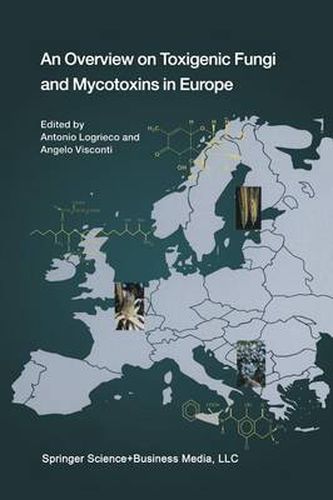Readings Newsletter
Become a Readings Member to make your shopping experience even easier.
Sign in or sign up for free!
You’re not far away from qualifying for FREE standard shipping within Australia
You’ve qualified for FREE standard shipping within Australia
The cart is loading…






This title is printed to order. This book may have been self-published. If so, we cannot guarantee the quality of the content. In the main most books will have gone through the editing process however some may not. We therefore suggest that you be aware of this before ordering this book. If in doubt check either the author or publisher’s details as we are unable to accept any returns unless they are faulty. Please contact us if you have any questions.
The growing interest in health risks associated with toxigenic fungi and related mycotoxins has led to the development of a number of research projects during the past decade in several European countries and a great deal of information has been produced on the natural occurrence of mycotoxins in plants, foods and feeds. The differences in environmental conditions (temperature, light, rainfall etc. ) and in exposed cultivated plants (type of cereals, cultivars etc. ) in the distinct European countries have significantly influenced the distribution of specific toxigenic fungi and related mycotoxicological problems. In addition, biogeographically structured lineages within some important toxigenic fungi have been recently discovered, of reproductive isolation. Transglobal showing a long evolutionary history transposition of plant products seems to have significantly contributed to the spreading of toxigenic species and lineages worldwide. Therefore, the migration of agriculturally important toxigenic fungi generated by trade exchanges may represent a major source of inoculum for new plant diseases in Europe and for a wider genetic diversity of local populations. It was our goal to provide the reader with an update of researches and surveys on the natural occurrence of toxigenic fungi and mycotoxins performed at a European level during the last 5-10 years. The editors are extremely grateful to the EU-COST-835 Agriculturally important toxigenic fungi for the financial support that allowed a number of European scientists to meet several times over the past five years to collaborate and exchange information about research advances on toxigenic fungi and mycotoxins.
$9.00 standard shipping within Australia
FREE standard shipping within Australia for orders over $100.00
Express & International shipping calculated at checkout
This title is printed to order. This book may have been self-published. If so, we cannot guarantee the quality of the content. In the main most books will have gone through the editing process however some may not. We therefore suggest that you be aware of this before ordering this book. If in doubt check either the author or publisher’s details as we are unable to accept any returns unless they are faulty. Please contact us if you have any questions.
The growing interest in health risks associated with toxigenic fungi and related mycotoxins has led to the development of a number of research projects during the past decade in several European countries and a great deal of information has been produced on the natural occurrence of mycotoxins in plants, foods and feeds. The differences in environmental conditions (temperature, light, rainfall etc. ) and in exposed cultivated plants (type of cereals, cultivars etc. ) in the distinct European countries have significantly influenced the distribution of specific toxigenic fungi and related mycotoxicological problems. In addition, biogeographically structured lineages within some important toxigenic fungi have been recently discovered, of reproductive isolation. Transglobal showing a long evolutionary history transposition of plant products seems to have significantly contributed to the spreading of toxigenic species and lineages worldwide. Therefore, the migration of agriculturally important toxigenic fungi generated by trade exchanges may represent a major source of inoculum for new plant diseases in Europe and for a wider genetic diversity of local populations. It was our goal to provide the reader with an update of researches and surveys on the natural occurrence of toxigenic fungi and mycotoxins performed at a European level during the last 5-10 years. The editors are extremely grateful to the EU-COST-835 Agriculturally important toxigenic fungi for the financial support that allowed a number of European scientists to meet several times over the past five years to collaborate and exchange information about research advances on toxigenic fungi and mycotoxins.